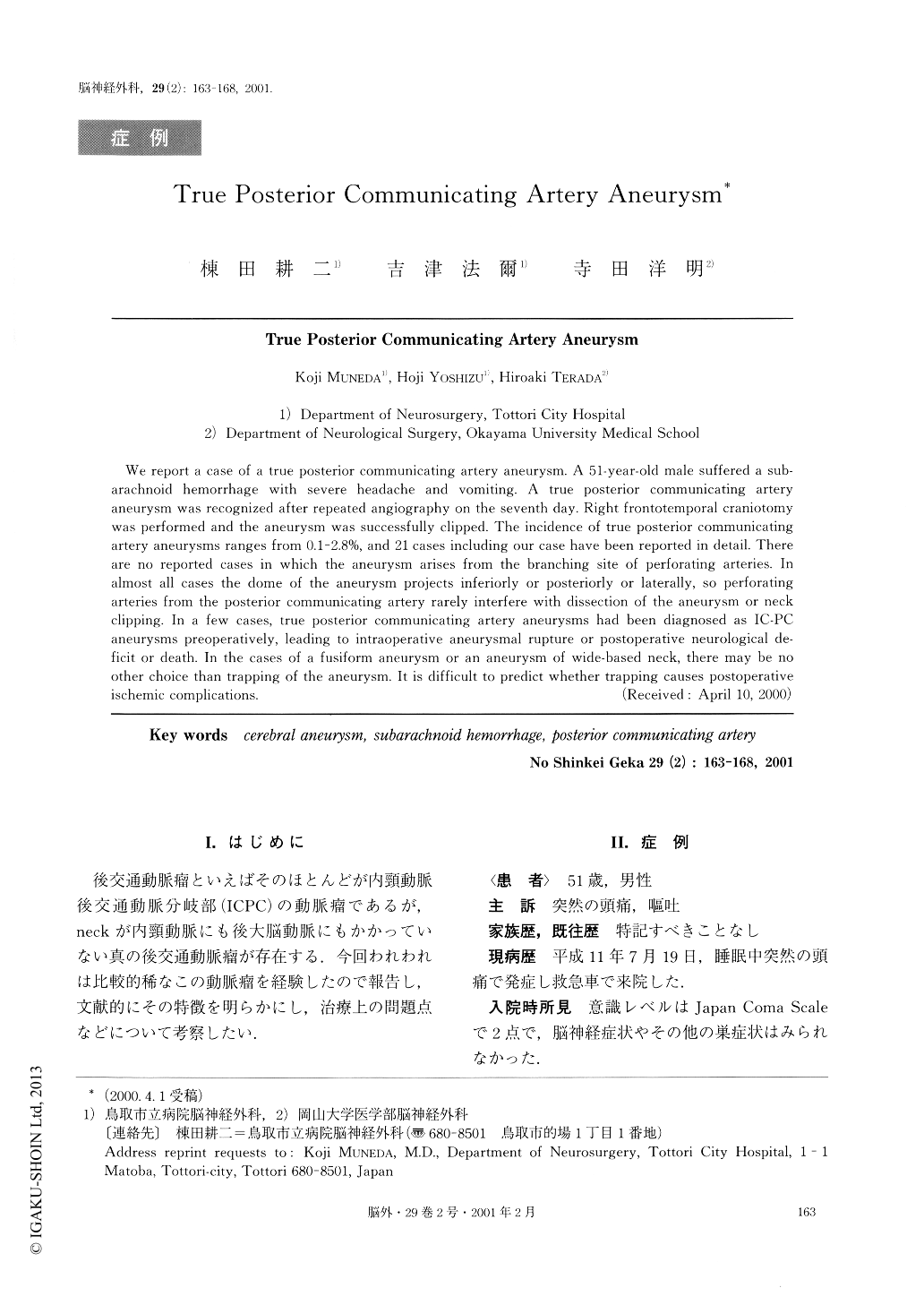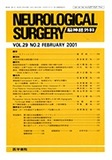- 有料閲覧
- 文献概要
- 1ページ目
I.はじめに
後交通動脈瘤といえばそのほとんどが内頸動脈後交通動脈分岐部(ICPC)の動脈瘤であるが,neckが内頸動脈にも後大脳動脈にもかかっていない真の後交通動脈瘤が存在する.今回われわれは比較的稀なこの動脈瘤を経験したので報告し,文献的にその特徴を明らかにし,治療上の問題点などについて考察したい.
We report a case of a true posterior communicating artery aneurysm. A 51-year-old male suffered a sub-arachnoid hemorrhage with severe headache and vomiting. A true posterior communicating arteryaneurysm was recognized after repeated angiography on the seventh day. Right frontotemporal craniotomywas performed and the aneurysm was successfully clipped. The incidence of true posterior communicatingartery aneurysms ranges from 0.1-2.8%, and 21 cases including our case have been reported in detail. Thereare no reported cases in which the aneurysm arises from the branching site of perforating arteries. Inalmost all cases the dome of the aneurysm projects inferiorly or posteriorly or laterally, so perforatingarteries from the posterior communicating artery rarely interfere with dissection of the aneurysm or neckclipping. In a few cases, true posterior communicating artery aneurysms had been diagnosed as IC-PCaneurysms preoperatively, leading to intraoperative aneurysmal rupture or postoperative neurological de-ficit or death. In the cases of a fusiform aneurysm or an aneurysm of wide-based neck, there may be noother choice than trapping of the aneurysm. It is difficult to predict whether trapping causes postoperativeischemic complications.

Copyright © 2001, Igaku-Shoin Ltd. All rights reserved.


